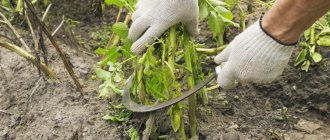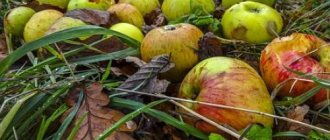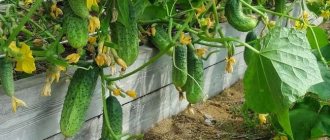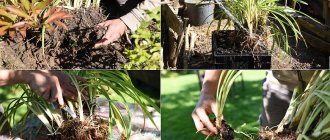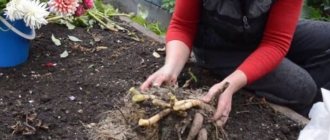Moscow, 02/06/2021, 05:58:27, editorial office PRONEDRA.RU, author Natalya Yazan.
Nowadays, many people prefer to provide themselves with vegetables and fruits from their own garden plots. This is economically justified and guarantees the environmental purity of the products. But the soil on the site becomes depleted during the harvest season and requires enrichment with compost. There are endless debates about its proper preparation. And the question: “Should I cover the compost for the winter or not?” – concerns many gardeners and gardeners.
Should I close my compost pile for the winter?
Compost is considered one of the most effective, natural and affordable fertilizers. It can be used on almost any type of soil, it improves the yield of most types of vegetables, and components for compost can be collected in every garden. Today we’ll talk about the features of winter compost, one that will not only fertilize the soil before the spring season, but will also warm wintering crops during severe tests with low temperatures.
Compost is the basis of soil nutrition
Compost is mainly used in spring and autumn. And if in the spring its importance is considered not so extreme, then autumn compost is really simply necessary for plants. First of all, it saturates the soil with useful elements that will help plants wake up easier in spring. On the other hand, compost is often used before winter as an insulating material that warms the earth in cold weather.
Of course, you cannot rely on compost alone, no matter how dense and rich it may be, in winter. It may not fully protect some plants, so additional insulating material may still be needed. For this reason, compost is not often recommended when it comes to winterizing soil. If the main task is to warm the soil, then it is better to use other, more reliable components, both organic and inorganic. However, if you grow crops common in our latitudes, primarily vegetables, then using compost for the winter will indeed be a wise decision. On the one hand, it will support the plants in winter, on the other hand, it will become the basis of the necessary nutrient medium.
Creating and using autumn compost
A variety of organic items can be used as compost before winter - leaves, grass clippings, branches, straw, wood chips, sawdust, paper, food waste, etc. The garden and vegetable garden are full of such waste in the fall. Anything that seems waste and is organic will work in your compost. The only caveat is that you should not use diseased plants and meat food scraps. They can attract animals, and the digestive waste of cats and dogs can carry disease. Therefore, almost everything that you collect on the site will be suitable for compost, as well as literally all the food waste that accumulates if you do not throw it away every day. So, excellent components for compost would be eggshells, spoiled vegetables and fruits, food scraps, and so on.
How difficult the composting process will be depends primarily on how much material you have. There are two main types of compost - cold and hot. For so-called cold compost, simply dump a bunch of grass, paper and dried leaves directly onto the ground or into a small container and let nature do the rest. This method does not require much maintenance, but it may take 6 months to 1 year before the decomposition process is complete. The slow compost method is good if you don't plan to spend a lot of time on the compost pile, if you don't have too much waste, and if you don't plan to use the compost anytime soon. But it should also be noted that preparing such compost will take a lot of time.
Hot compost is more demanding, but with a few minutes a day and the right ingredients, it will be ready within a few weeks (weather conditions permitting). It is ideal for winter for a number of reasons. Due to the high temperature generated in the compost heap, the process may drag on and go into winter, so the compost will continue to ferment, warming the earth, protecting plants from frost with its mass, and it will be ready in early spring. Therefore, of course, it is recommended to prepare hot compost for the winter; there is still enough time for this.
Design features
A compost bin can be made in many ways, but for any design you need to prepare the space. It is necessary to remove the turf and loosen the soil in the selected area to a depth of 30 cm. The larger the hole, the faster rotting will occur. Basically, the best size ratio is: length - 2 meters, width - 1.5 meters, height - at least 1.1 meters.
For the floor, it is best to choose bare earth; you should not cover it with materials that are not capable of permeating moisture. You can cover the box with a lid, so the contents will rot faster.
Compost heap for the lazy. What should you not put in compost?
Not allowed: plants infected with diseases, rhizomes of harmful weeds, fats, inorganic waste, synthetic fabrics. It is not recommended to add cabbage to compost, as its rotting causes an unpleasant odor, as well as meat waste, since in addition to the stench, they also attract rats.
But that's not all. When forming a compost heap, you need to remember two rules. First, the smaller the waste, the faster it rots. Secondly, the ratio of green (nitrogen-rich) and brown (fiber-poor) masses should be 1:5. This ratio will allow bacteria to fully develop and significantly speed up the process of compost maturation.
Since it is difficult to form a compost heap at one time and in most cases it is laid out gradually, it is quite difficult to understand by eye the amount of green and brown components contained in it. But there are principles that you can rely on to understand what needs to be added: if the compost heap has an unpleasant odor, it means it lacks the brown component; if it is cool and has no visible fumes, it is necessary to add green mass. If the balance is maintained, the compost heap should smell like earth, emit warmth, be moist and steam a little.
Ideally, a composting pile is laid out in layers with alternating not only green and brown contents, but also finer and coarser fractions of components. After final formation, it is covered with a layer of earth (5 cm), and then with old straw or a specially perforated film (for ventilation).
Saturate with oxygen
In order for bacteria to efficiently decompose waste, they need oxygen. Aeration can speed up the maturation of compost, but it requires a little effort. After the contents of the heap have been mixed, you should pierce it with long thin sticks in many places. This will allow oxygen to reach even the deepest layers.
Related article:
Succinic acid perfectly stimulates crop growth
Is it necessary to cover the compost heap with film? Preparing compost under film
A few years ago, a gardener came across the idea of insulating compost heaps under a film cover. This simple invention solved the problem of a specific odor that spreads from the compost heap throughout the entire site, and also simplified the protection of the compost heap from insects and rodents and gave the gardener a simple and inexpensive way to prepare compost anaerobically (without access to air).
Now you can freely prepare compost in your garden plot without fear of uninvited guests entering it. Simply cover your compost pile with a large piece of plastic wrap (opaque wrap is preferable to clear wrap for this activity), insulate it down to the base (soil layer) and forget about the compost for a long time. It's simple: no odors, no flies, no rats!
Compost prepared under anaerobic conditions will rot in a shorter time than that prepared openly (with air access). Preparing compost under a film not only speeds up the decomposition of organic matter, but is also an easier way to obtain compost than conventional methods that use open compost heaps.
Using this method does not require any interruption, repeated wetting of the heap and generally no additional costs, effort or resources other than a one-time covering of the compost heap at the very beginning of composting. First, the area allocated for the compost heap is plowed in order to loosen the soil and activate the bacteria present in it.
On a plot of land prepared in this way, a compost heap is laid in the usual way. After you lay the compost heap, you need to water it once - so that water penetrates it from top to bottom. After such watering, the heap is covered with a piece of plastic film. Gardeners using this method report wonderful results.
Cover
For the same reason, insulating the heap will significantly help compost ripening. Peat and straw can be used for thermal insulation. The thicker their layer, the better they will perform their function. To maximize the effect, you can lay out the film on top and cover it with stones for fixation. This will not only help in maintaining heat, but will also protect the internal contents from drying out.
Related article:
Name of fertilizers with potassium and phosphorus
Compost pit in winter. Compost and compost pit
Compost is a product of microbiological transformation of almost any organic substance into a valuable fertilizer. In addition to the fact that it provides balanced nutrition for plants, its use perfectly improves the structure of the soil, increases its humus content, makes it loose, optimally moisture- and breathable, and easy to cultivate. Compost is also a place for recycling plant residues: mowed grass, weeded weeds, fallen leaves, substandard fruits and vegetables, kitchen waste, peat, fresh manure and much more. The more diverse the contents of a compost heap, the faster the decomposition processes occur in it. Compost does not burn the roots and is beneficial for all plants.
Compost pits and other containers
When we talk about a compost pit, we don't mean a shapeless mound of rotting grass. In fact, compost can be called both a composting container and a compost box or, in the simplest case, a pile. Most often they are knocked together from boards or made from chain-link mesh attached to wooden posts. It's relatively easy to make a compost bin from old pallets held upright. However, aesthetically they are not very attractive. The industry also produces a variety of compost bins, but they are often made from cheap polyethylene, which is not resistant to ultraviolet radiation, and therefore they last no more than three years.
Compost aeration
Ventilation, that is, aeration, dramatically speeds up the composting process. This is usually done by turning or tossing the pile with a pitchfork. This is quite hard work, but it can be made easier.
Place long thick sticks horizontally across the pile every thirty centimeters. After laying and heating the compost, it is convenient to shake them and thus loosen and provide oxygen to the ripening mass. If you just pull them out, you get some kind of odors.
Pre-install a polyethylene or asbestos-cement pipe with several holes in the center of the future heap. This ventilation pipe will serve for many years, providing air access to beneficial microorganisms.
Biofactory
In order for bacteria and fungi to work more efficiently, missing nutrients should be added to the compost. If the compost is dominated by last year's leaves, fallen pine needles or coarse stems, it is necessary to add nitrogen fertilizers. If compost is prepared from weeds or mowed lawn grass, it is useful to add phosphorus or potassium fertilizers to it. Ash and eggshells dramatically improve the quality of compost and shorten its ripening time. The compost ripening time is 1–2 years. Therefore, you need to have at least two compost containers on your site. Undecomposed plant debris can serve as a base for the next compost or be used to create warm beds in the spring.
How to deal with the smell from a compost pit
To prevent the compost pit from becoming a breeding ground for flies, do not pour meat broths onto it or throw fish waste. As they decompose, they not only attract insects, but also have an unpleasant odor. It’s better to dig a shallow hole under a tree, throw fish offal or sour cottage cheese into it and immediately sprinkle it with earth on the bayonet of a shovel. The tree will certainly respond with rapid growth to such “burials.”
Another reason for the bad smell from a compost pit is the predominance of anaerobic processes in it, that is, processes occurring without access to air. This happens when, after mowing the lawn, the grass forms a thick layer, more than 0.5 m. To prevent a sour smell from appearing, you should throw a couple of shovels of ordinary soil onto each layer of grass.
Location of the compost pit or heap
To keep the pile from drying out, place the compost in the shade. For the same purpose, it is useful to cover it with synthetic film or other available materials. Covering with film helps extend the decomposition period until late autumn. In winter, it is also necessary to take care of the compost heap. To do this, throw more snow on it. This prevents unwanted freezing.
Design options
There are 4 options for building a compost pit:
- Depression in the ground. You can dig a hole yourself and fill the bottom with hay. After each replenishment, you will need to fill the contents with fresh grass. However, there is a drawback - the lack of heating, which is necessary to increase the rate of decay.
- Wooden structure. To make a wooden box for compost, the dimensions indicated earlier are suitable. The supports need to be dug 20 cm into the ground; when creating it, it is worth leaving ventilation holes. Using wooden leaves, you can divide the box in two, one for old and one for new compost. You can paint the walls.
- Concrete pit. At a depth of about 70 cm, a trench measuring 2 by 2.5 meters is dug. You need to set up the formwork, the wall thickness is about 10 cm. You need to pour the concrete, and remove the formwork when it hardens. You can close such a pit using an iron shield or film.
- Plastic box. You can purchase a ready-made compost bin from a garden supply store, but these bins are often flimsy. However, the price is captivating; they are usually cheaper than other options.
Where to place the compost heap. Compost: where to place it?
For composting in garden plots, you can use all biological waste and waste, everything that contains organic matter: branches, kitchen waste, tops, weeds, grass clippings, shavings, sawdust, leaves, human waste products. They will produce organic fertilizers of excellent quality. Some composts are very close or equal in nutrient content to manure. Composting is the best method for recycling organic waste and producing environmentally friendly and cheap organic fertilizers.
Benefits of Compost
Preparing composts in garden plots has a number of advantages:
• We receive environmentally friendly fertilizers because we always know what we are putting in the compost pit.
• We have an undoubted economic benefit, because the use of composts reduces the cost of purchasing other types of fertilizers, primarily mineral ones, which are now expensive.
• We can prepare any required amount of compost from any organic waste that is in the garden.
What place to choose for compost?
If you decide to make compost on your site, you need to allocate a place for it. It is better to give him the far corner of the site at a distance of about 0.5–0.8 m from its border. The compost storage (this is the name of the place where waste is stored) should not be very far from the house (kitchen); It is worth laying a path made of tiles, bricks or other materials to it. Ideally, this area should be protected from the wind and protected from direct sunlight.
If it is not possible to build a compost storage facility (or, as they also say, a composter) in the shade of trees or tall bushes, then the space allocated for it can be protected from sunlight by planting tall plants: sunflower, Jerusalem artichoke, corn, climbing beans, which are needed plant every year. Often, for shading, a pumpkin is also planted on a compost heap (it should be planted on the edge).
The compost site should not immediately catch the eye and spoil the appearance of the garden plot. It can be decorated, for example, hidden from prying eyes by planting shrubs - elderberry, hazelnut, chokeberry and lilac. You can also put a small slatted fence around it, which will serve as a support for any climbing plants. There is another decoration option: installing a fence made of branches - it will come out both original and beautiful.
The size of your composting area can vary depending on the size of your garden and the amount of compostable material you have available. A composter measuring 3–4 m2 can provide organic fertilizers to about 100 m2 of area allocated for planting.
To make good quality compost, you need to comply with the main requirements of composting: selecting the right organic components, ensuring air access and optimal humidity in the compost mass.
Requirements for placement
There are two criteria for choosing a location. The first is how far away the compost bin is. Remoteness is necessary so that the owner of the site and his neighbors do not get an unpleasant odor. The second factor is the inapplicability of the site for other purposes. You need to choose an unfavorable area of soil, in a dark place where it is impossible to grow any plants normally.
In addition, the area under the box must be level to avoid stagnant water. Regarding water, you must maintain a distance of at least 25 meters from the water source on the site. You should not place a compost pit near trees, because the toxins released during rotting can have a detrimental effect on the plant.
Also, as mentioned earlier, you should not choose well-lit places; it is better to place the box somewhere in the shade.
Tips for proper use
Storing compost is not everything. Proper further actions will help speed up the decay process and make the fertilizer more nutritious. Please adhere to the following guidelines.
- Moisten the pile periodically, but don't overdo it. When dry, rotting stops.
- From time to time, pierce the compost with a pitchfork and, as it were, “comb” it. This is necessary for better access of oxygen, which is an important component of the overall process.
- A black film used to cover the top of the pile helps to reduce cooking time.
- If possible, add earthworms to the compost.
- To improve aeration, maintain looseness of the mass and accelerate decay, the compost must be stirred occasionally.
The following additives help speed up cooking.
- Rotted horse manure.
- Some types of plants (valerian, chamomile, dandelions, yarrow).
- Specially produced activating preparations, for example, Baikal EM-1, Compostin and Compostar.
- Stale (dried) bird droppings.
- Legume stems.
- Bone and dolomite meal.
- Superphosphate and complex mineral fertilizers.
As the contents rot, the temperature inside rises, and light steam may even rise from the heap. This is normal and indicates that everything is going well.
Spare no effort and time for this simple structure. This will solve the problem of recycling a considerable part of organic waste, and will provide valuable fertilizer, the quality and environmental friendliness of which you will be absolutely sure of.
